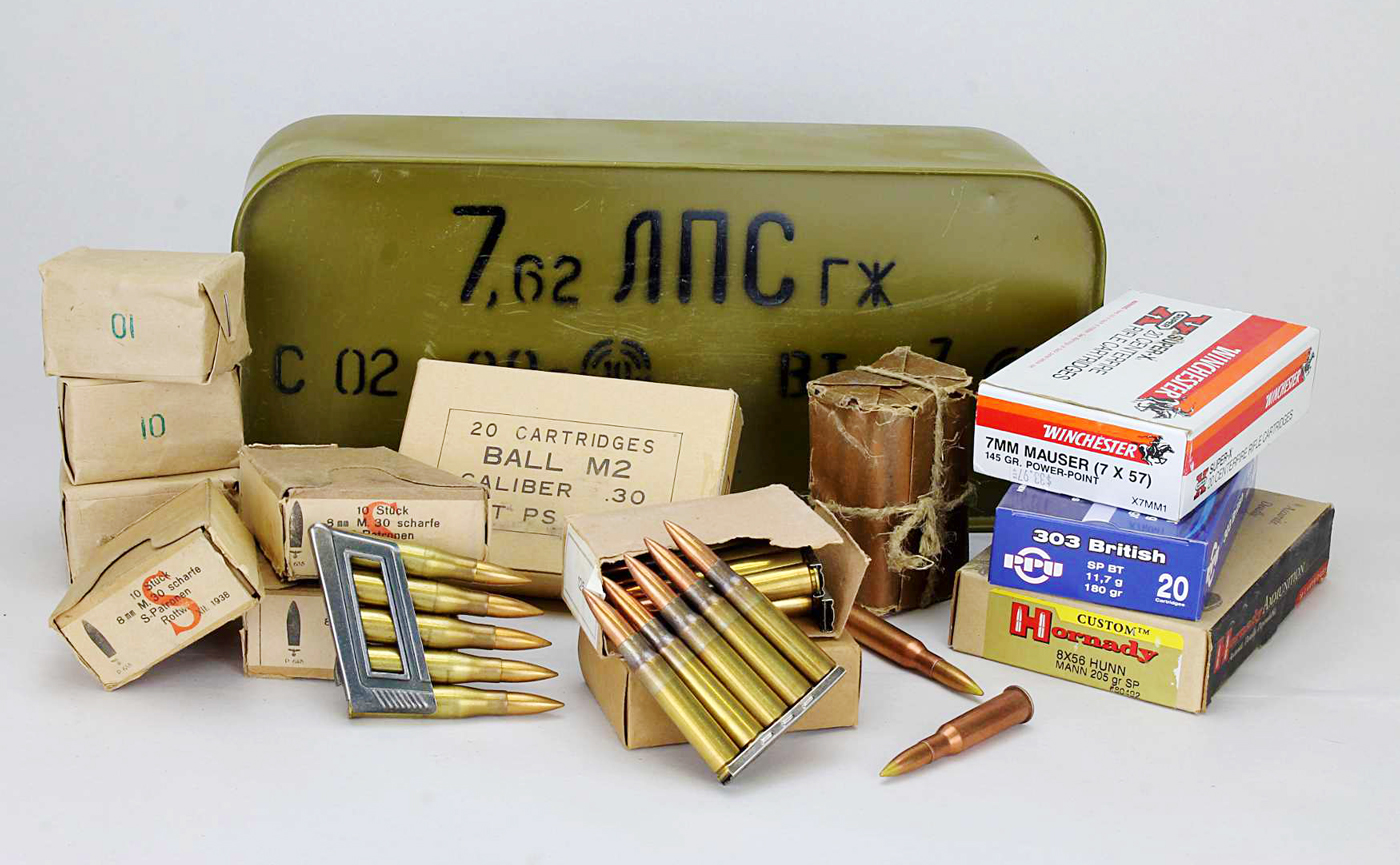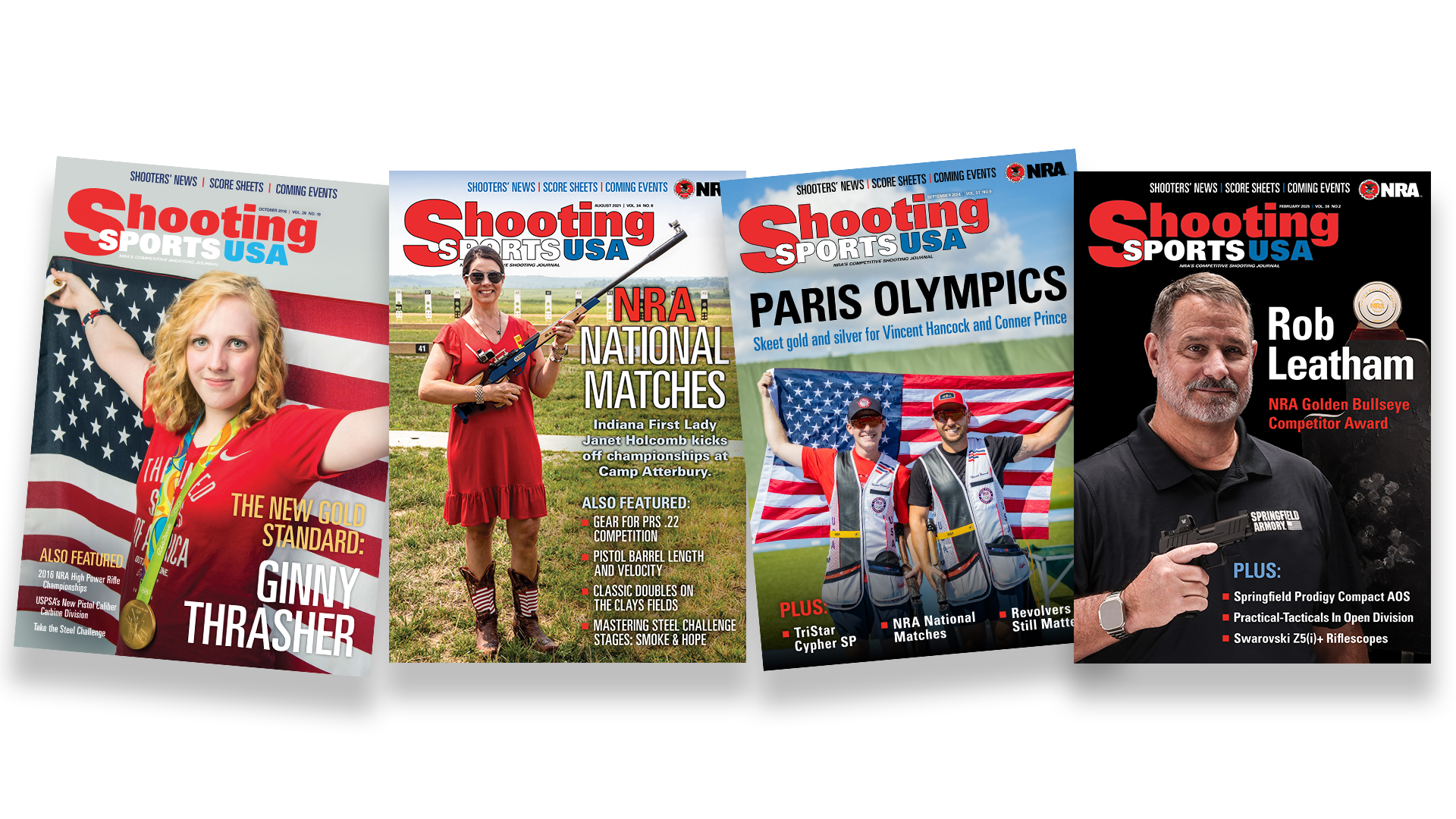
An increasing number of NRA High Power rifle shooters test their marksmanship skills in a kind of rifle devolution. “As-issued” Vintage Military Rifle (VMR) Games levels the equipment playing field, emphasizing personal skills while also avoiding the escalating “arms race” for more and more precise—and expensive—target rifles and designer cartridges.
Every High Power rifle shooter knows the Civilian Marksmanship Program (CMP) as the organization responsible for Excellence In Competition (Leg) matches and issuing points toward earning the coveted Distinguished Rifleman award. Ten years ago they created the “as-issued” matches for inexpensive military surplus rifles, in an effort to attract new shooters. To differentiate these matches from established formal competition, CMP calls them “Games.”
There are a dozen different CMP Games Rifle Matches; among these, foreign milsurp bolt action rifles are eligible to compete in three of the games: the Vintage Military Rifle, the as-issued Military Rifle and the as-issued Military Rifle 3-Gun Aggregate Matches.

A CMP Vintage Military Rifle is any “as-issued” foreign military bolt action rifle, plus the U.S. M1917 and Krag-Jorgenson rifles. But before you show up at a VMR match with your bolt action Austro-Hungarian Fruwirth, let’s see how CMP rules define “as-issued”:
- The rifle was commonly issued to any nation’s military forces.
- It is in exactly the same configuration as when issued.
- The only accurizing allowed is the careful fitting of original government parts or commercial parts of the same size and weight as originals.
- No flash suppressors, cheek pads, recoil pads, weights or stock extensions permitted.
- Replacement barrels must be of exactly the same contour—with all the same cuts—as original, as-issued barrels.
- No replica or commercial rifles are permitted.
- As-Issued Foreign Military Rifle
- As-Issued M1903 Springfield
- Other As-Issued U. S. Military Rifles (the M1917 and Krag)
- As-Issued M1 Garand
- As-Issued M1 Carbine
- As-Issued Vintage Sniper Rifle
- Manually operated bolt action or straight-pull bolt action rifles only.
- Minimum trigger pull weight of 3.5 pounds.
- Must be in the original as-issued chambering.

Note that the M1903/M1903A3 Springfield rifle has its own separate classification. The M1917 rifle is eligible for competition under the other as-issued U. S. Military Rifles classification, as is the Krag-Jorgenson, but the U.S. 6mm Lee Navy rifle, for example, is not because it was never “commonly issued,” having been in partial service with only the Navy for a short period.
Eligible foreign VMRs include just about every bolt action magazine rifle in military service since the 1890s, such as Mausers from any country, the Arisaka, Carcano, Enfield (No.1, No.4 and P14), Mosin-Nagant and the straight-pull Steyr-Mannlicher and Swiss K-31 rifles.
Which One?
From a competition perspective each rifle has its advantages and/or drawbacks, and even among a single type—such as the many Mauser variants—those can differ significantly. Differences run from ergonomics to sights to sling configuration and are far too numerous to specify for each rifle here, though we can touch on a few basics of concern when choosing a rifle for the Games.
Ammunition availability probably tops the priority list, as the rules don’t allow you to fix bayonets and charge. Happily, ammo is still available as milsurp or new commercial manufacture for the Mosin-Nagants, and is comparatively cheap, to boot. Not as cheap, 7.5x55 Swiss milsurp and commercial ammo for the K-31 rifle is still out there. For many other rifles, such as the Enfields, the milsurp supply has dried up but commercial ammo is routinely on store shelves. Handloading widens your field of affordable choices to include the Arisakas, Carcanos and the less common Mauser cartridges.
The Swedish Mausers have a deserved reputation for better-than-combat accuracy (precision), but consider that VMR Games are fired at only 200 or 100 yards, and that advantage is somewhat lessened. Same goes for the theoretical accuracy advantage of a longer sight radius on rifles with longer barrels.
Many battle rifles have as-issued rear sights with lowest settings at 300 meters, requiring holding below six o’clock or modifying the sights in accordance with CMP rules, such as installing a taller front sight. If you have trouble clearly seeing barrel mounted rear sights, you may do better with the M1917 or British P14 and No.4 rifles with their receiver mounted rear aperture sights.
Are chargers (“stripper clips”) available? Without them, single-loading five rounds for the rapid fire strings will sure eat into your allotted 60 and 70 second rapid fire time limits.
As an experienced NRA High Power shooter you may look askance at some sling mounting. Mosin-Nagant rifles, with their slings mounted to leather thongs looped through stock holes, appear to be less than rock-solid. And many milsurp rifles have sling swivels mounted on the rifle’s left side rather than underneath, resulting in pressure pulling somewhat left rather than straight downward.
If you already own an eligible rifle, shoot a few matches with it before looking for another that may have a perceived advantage; you may discover the real fun is in seeing how well you can do with the rifle that interests you, rather than in shooting the highest possible scores.
“Original” Vs. Eligible
Knowing a bit of your milsurp rifle’s general history can be helpful in avoiding a match day faux pas that could disqualify it.

Shooters sometimes show up at Games with rifles fitted with original aperture precision sights; though original they are not eligible for competition because such sights were not on “commonly issued” rifles, they were instead intended for sniping or utilized in the role we would today call the “designated marksman.”
Many Swedish M96 and M38 Mausers have muzzles threaded to take a blank firing adaptor; shooters sometimes install an aftermarket muzzle brake on the threads, but the brake is not eligible for competition.
We also see rifles at VMR matches that are original and were issued to troops, but they fail the “commonly issued” rule. The Enfield “jungle carbine” is one of these. A rule of thumb is, if your rifle has a feature that you think gives you an advantage over identical rifles, it’s probably not “as-issued.”
Get the Free Rule Book
The “as-issued” rules do have some room for latitude in the face of reality. Acknowledging that original leather or cloth slings have not always survived time or storage, the rules allow the use of U.S. M1907 leather or M1 web slings on any Vintage Military Rifle. As mentioned earlier, you can replace shot-out barrels with new ones of identical appearance and contour (some competitors seek advantage in this rule to install barrels with match-grade bores, which is legal).

If in doubt about your rifle’s eligibility, email CMP with your specifics and ask. You could also bring it to a CMP Sanctioned match and ask the match director. If you’re pet vintage rifle isn’t eligible under CMP rules, many clubs run non-sanctioned “CMP style” VMR matches where it is probably welcome.
The rules do change as the Games continue to evolve to include as many shooters and their rifles as possible—for example, CMP rules allow some minor sight and sling mounting modifications to milsurp rifles. A free downloadable PDF of the latest CMP Games rule book is available from CMP at http://thecmp.org/competitions.


































